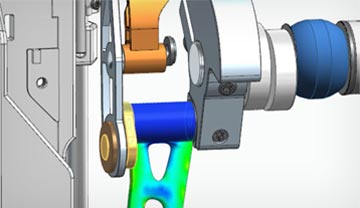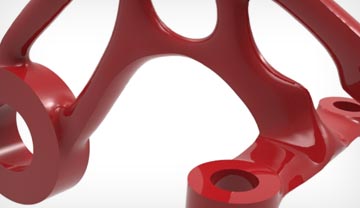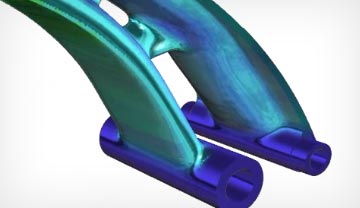Generative design brings topology optimization
Generative design brings topology optimization
Using Generative Design in Solid Edge 2019, designers define a specific material, design space, permissible loads and constraints and a target weight, and the software automatically computes the geometric solution. Results can be immediately manufactured on 3D printers, or refined in Solid Edge for traditional manufacturing.
Capabilities
Powerful 3D design tools bolstered by topology optimization
The benefits of generative design range from lighter components to minimal downstream manufacturing material waste. Highly customized complex shapes can result, perfect for casting or today’s high-resolution additive manufacturing processes. With generative design you can create the optimum design between weight and strength, tailored for your desired manufacturing process.

Efficient topology optimization for CAD parts
Based on your parameters (a specific component material, design space, or permissible loads and constraints) compute a reduced-mass geometric solution that maintains structural integrity. Run multiple weight targets, load cases, and constraint scenarios at once.

Advanced parts ready for 3D printing
Parts resulting from generative iteration are ready for manufacturing via additive processes. High-resolution 3D printers can handle the complex shapes, shortening time-to-market and production time for replacement parts.

Evolve the design using convergent technology
Optimized components coming out of generative design can be further modified with convergent modeling and synchronous technology in Solid Edge. Meshed results are integrated into the normal model editing process, allowing you to get the final design needed for the task at hand. No more waiting for tedious, inaccurate conversions from triangular mesh to b-rep.
